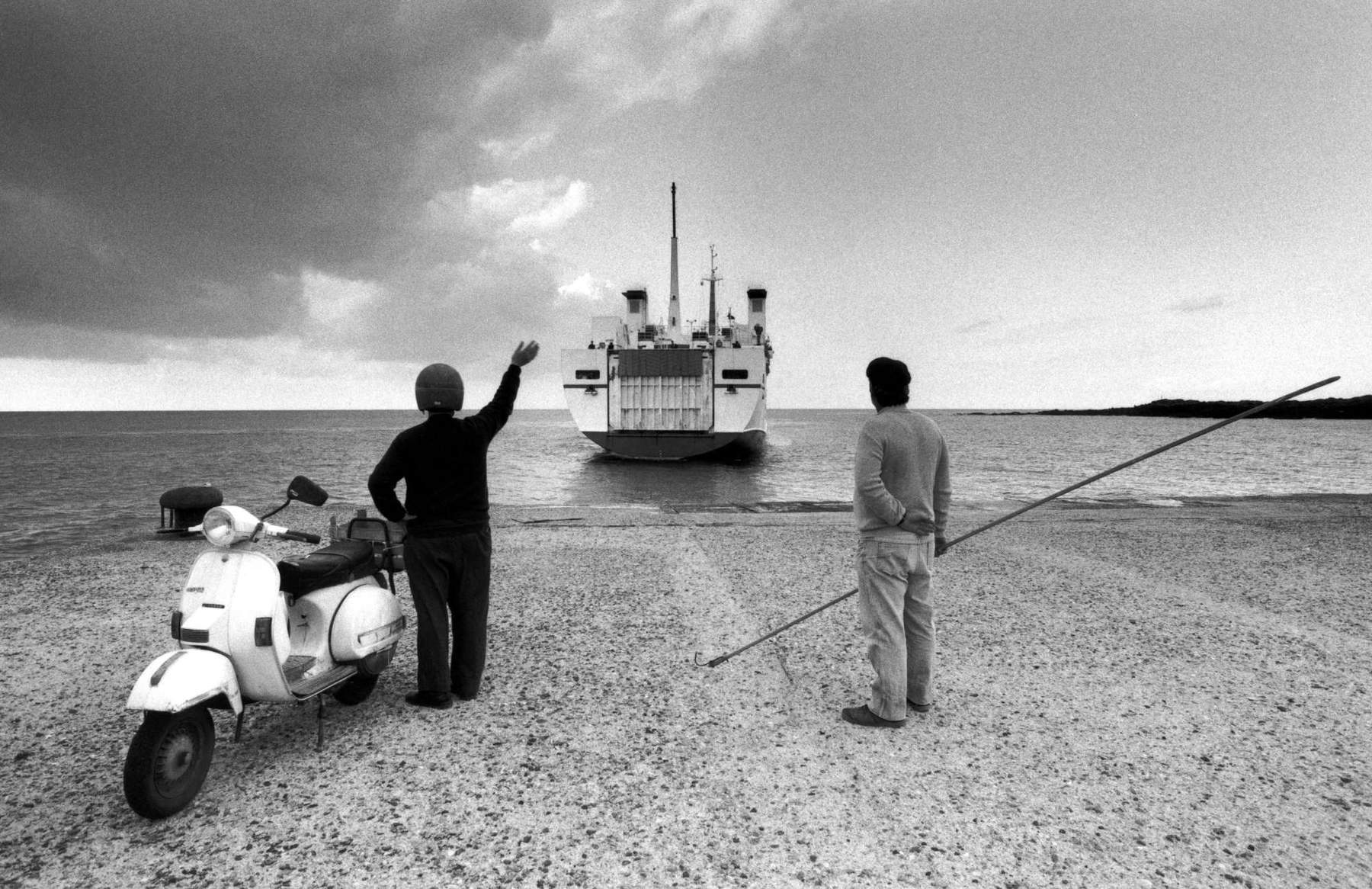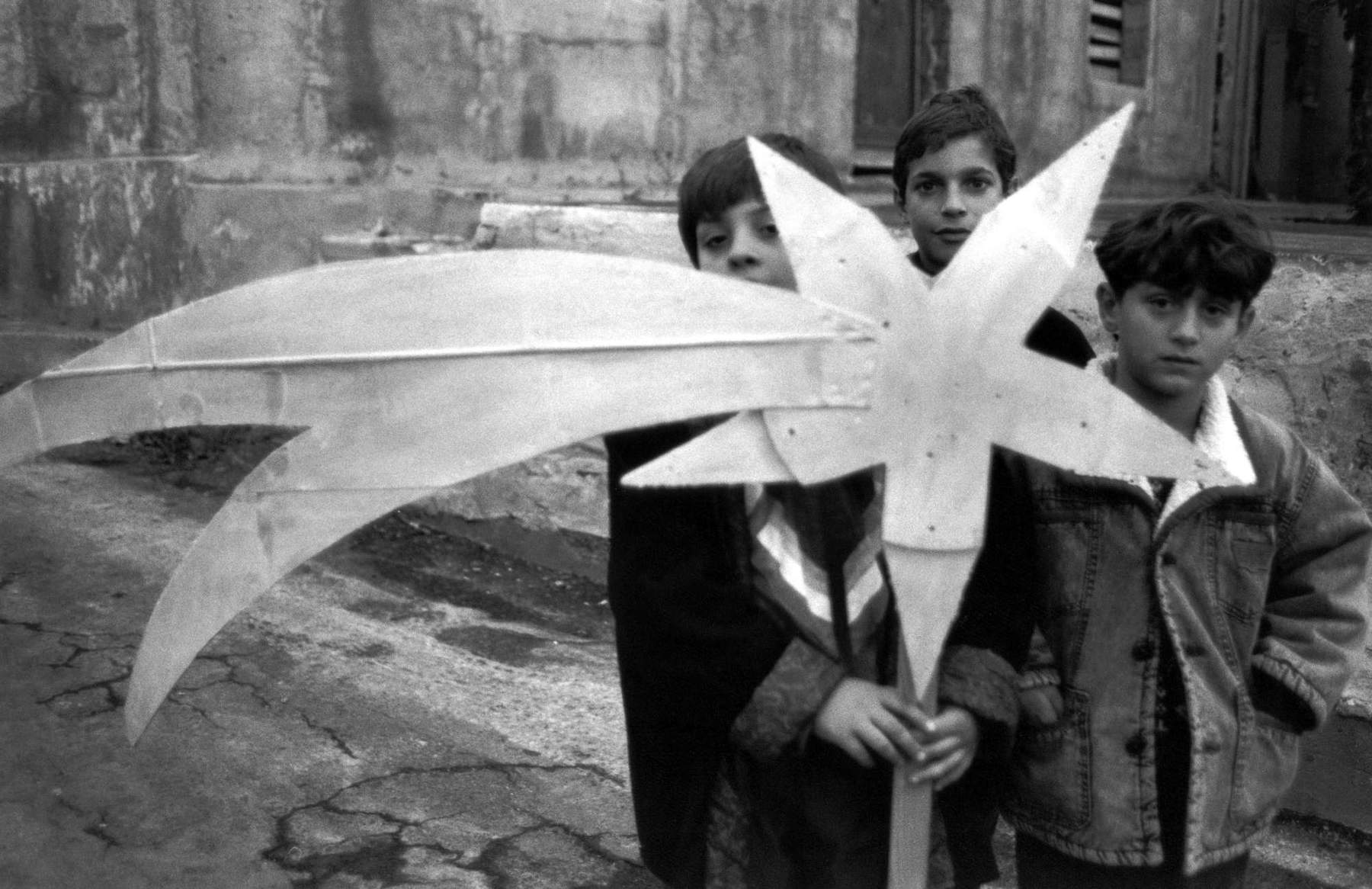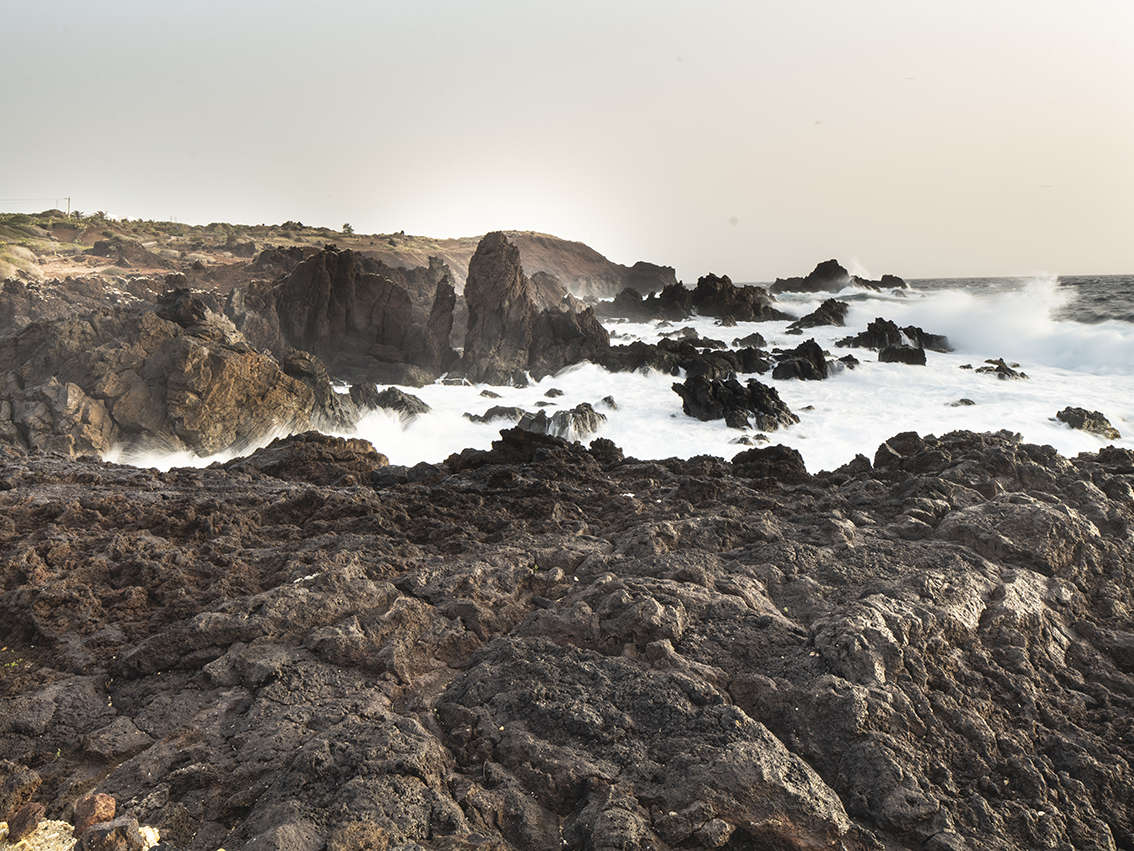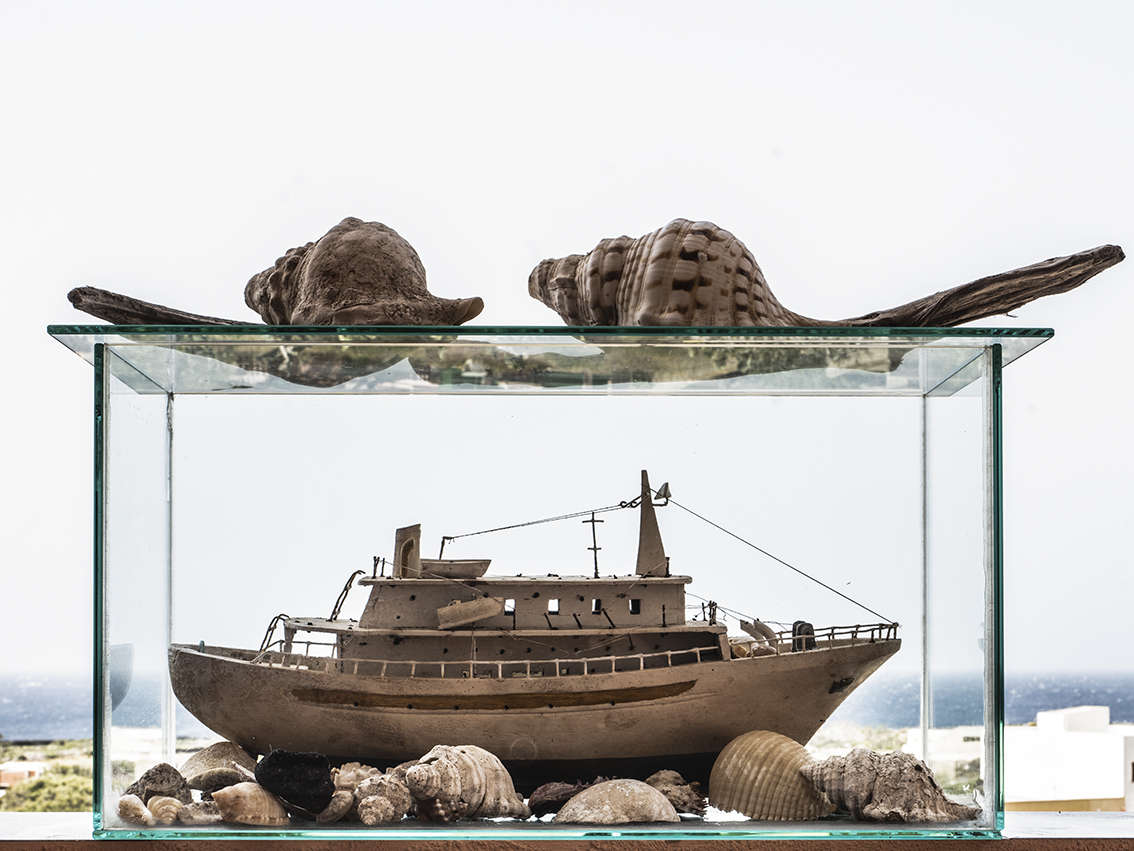Island poetry through Berengo Gardin and Romano on display at Milan's Civic Aquarium
On Wednesday, Nov. 27, the MilanCivic Aquarium opens Insulae Aqua. Gianni Berengo Gardin and Filippo Romano, a photography exhibition promoted and realized by the City of Milan - Culture and the Civic Aquarium, with the support of the Aedificante Foundation. The exhibition will be on view from November 28, 2024 to January 19, 2025. The project curated by Alessandra Klimciuk, exalts the island as an essential and deeply symbolic dimension of our living. The term island, derived from the Latin insŭla, designates a land surrounded by water, a circumscribed and hardly accessible place that combines the concreteness of physical isolation with the poetic tension toward the infinite. In this perspective, the island becomes image, metaphor, dream and symbol of the contemporary human condition, a microcosm in which introspection and imagination are intertwined. The exhibition is proposed as a photographic journey dedicated to Linosa, a small island with unspoiled nature, characterized by an extraordinary landscape, biological and environmental complexity. Through the photographs of Gianni Berengo Gardin (Santa Margherita Ligure, 1930) and Filippo Romano (1968), Insulae Aqua tells invites us to consider the relationship between man and nature, community and isolation, reality and imagination. The exhibition presents a body of 63 photographic works that narrate Linosa through two distinct and complementary perspectives. On the one hand, Gianni Berengo Gardin’s 26 black-and-white images, 24 of which have never been exhibited before, include numerous vintage prints taken in 1991. On the other, Filippo Romano’s color reportage, composed of 37 shots taken between 2021 and 2024, returns a contemporary and vibrant vision of the island.
Gianni Berengo Gardin, a master of social and civil reportage, landed in Linosa from December 24 to 26, 1991 to immortalize what he called “the ’poor,’ but ’living’ Christmas of the island of Linosa, the smallest and farthest island from the motherland. The most forgotten of Italy in the middle of the Mediterranean.” During the three days, he shot as many as 46 rolls of film, documenting with a certain sensitivity the life of a community that, despite its geographical isolation, expressed human warmth. In his strictly black-and-white shots, intense portraits, animated glimpses of children and compositions interweaving landscapes, architecture and moments of daily life emerge. Filippo Romano, on the other hand, returns a current and chromatic reading of the island. With his reportage, specially commissioned for the project, he captures the landscape and vital peculiarities of Linosa. The photographer brings into dialogue the intimate and communal dimension with the naturalistic and environmental one. As Alessandra Klimciuk points out, Insulae Aqua is a testimony to living elsewhere, where suspended time is intertwined with Filippo Romano’s visual explorations. Internationally recognized for his reportages and two participations in the Venice Biennale, Romano documented Linosa between 2021 and 2024, more than 30 years after Gianni Berengo Gardin’s shots.




The exhibition includes a project room curated with the collaboration of young Linosians, who enrich the visual narrative with black-and-white underwater photographs, basaltic stones, lichens, objects recovered from the sea, school notebooks, poems and folk songs. The elements restore the deep connection between the inhabitants and the primordial elements of water and land. Linosa, the most remote of the Italian islands is capable of transforming isolation into opportunity. While limited accessibility preserves its biodiversity and precious habitat intact, the island expresses a culture of welcome and sustainability that opposes marginalization. Circular economy and environmental protection thus become the pillars of an existence rooted in that isolation that, far from being a condemnation, reveals a strong identity open to the future. Insulae Aqua represents an opportunity to reflect on the existential dimension of islands, strips of land surrounded by the deep blue, where even thought is shaped according to the blue mind. This state of mind, recognized by neuroscience, highlights the primordial union between human beings and water, an element that profoundly influences the perception and experience of those who live near the sea.
The project goes beyond the photographic exhibition and is an ongoing multidisciplinary research, focused on remote islands and developed through a community-based approach. Workshops and art residencies support dialogue between different disciplines and promote integration between artists and local communities. The goal is to create a cultural hub capable of listening to and enhancing the voices of those who inhabit these unique realities, the true custodians of their problematic and specificities. Supported by Aedificante, a cultural project that combines construction, art and technology, Insulae Aqua focuses on fundamental themes such as community, sustainability and relationship with the territory. Through the works of Gianni Berengo Gardin and Filippo Romano, the project becomes a platform to reflect on a fragile but essential balance between nature and humanity.
The exhibition is also complemented by a Public Program that offers meetings, conversations and guided tours to explore the themes suggested by the exhibition:
-
Dec. 5, 2024, 6 p.m. Daria Bignardi. Island, Isolation, Isolitude;
-
Dec. 14, 2024, 4 p.m. In the exhibition with the curator and Filippo Romano;
-
January 16, 2025, 6 p.m. Gianni Berengo Gardin and Davide Mengacci. Linosa;
-
Jan. 19, 2025, 4 p.m. On exhibition with the curator and Filippo Romano;
A volume edited by Alessandra Klimciuk will be published on the occasion of the exhibition, containing, in addition to the curator’s essay and reproductions of the works on display, texts by Gianni Berengo Gardin, Filippo Romano and Elisabetta Polezzo (Moebius editions, Quaderni Aedificante).
Notes on the artists
Born in 1930, Gianni Berengo Gardin lives in Milan. He is considered one of Italy’s leading photographers. His works, almost exclusively in black and white, range from humanist reportage to environmental description, from social investigation (his reportages on psychiatric institutions and Roma) to industrial photography (Olivetti, Alfa Romeo, IBM, Italsider), from landscape to architecture (his decades-long collaborations with TCI and Renzo Piano). He has published in the main Italian and international press, but has devoted himself mainly to the creation of books (more than 260 photographic volumes). He has exhibited in more than 360 solo exhibitions in Italy and abroad. His works are in the collections of major international museums and foundations, including MoMa in New York, the Bibliothèque Nationale de France, the Maison Européenne de la Photographie in Paris, and MAXXI in Rome. Among the many awards he has received are the Leica Oskar Barnack Award in 1995 and the Lucie Award for Lifetime Achievement in 2008.
Filippo Romano was born in 1968 and is a documentary and architectural photographer who trained at I.C.P. in New York. He teaches in the Naba and IUAV masters of photography. He has collaborated with Domus, Abitare, Io Donna and many other Italian and foreign magazines, and with several Italian and foreign architectural firms, such as Herzog; De Meuron for the construction of the new headquarters of Fondazione Feltrinelli in Milan. He has exhibited in two different editions of the Venice Architecture Biennale in 2010 and 2021. Recently, he documented the contemporary state of Alessandro Mendini’s architecture for The Museum of the Milan Triennale and carried out an editorial project for the Marsilio Arte publishing house on the Prosecco Unesco territory. In 2022 the State 106 project was acquired in the permanent collection of MUFOCO | Museum of Contemporary Photography.
Practical information
Hours:
Tuesday through Sunday 10 a.m.-5:30 p.m.
Civic Aquarium Ticket:
5.00 euros full
3.00 euros reduced (visit to the exhibition is included in the entrance fee)
 |
| Island poetry through Berengo Gardin and Romano on display at Milan's Civic Aquarium |
Warning: the translation into English of the original Italian article was created using automatic tools. We undertake to review all articles, but we do not guarantee the total absence of inaccuracies in the translation due to the program. You can find the original by clicking on the ITA button. If you find any mistake,please contact us.




























